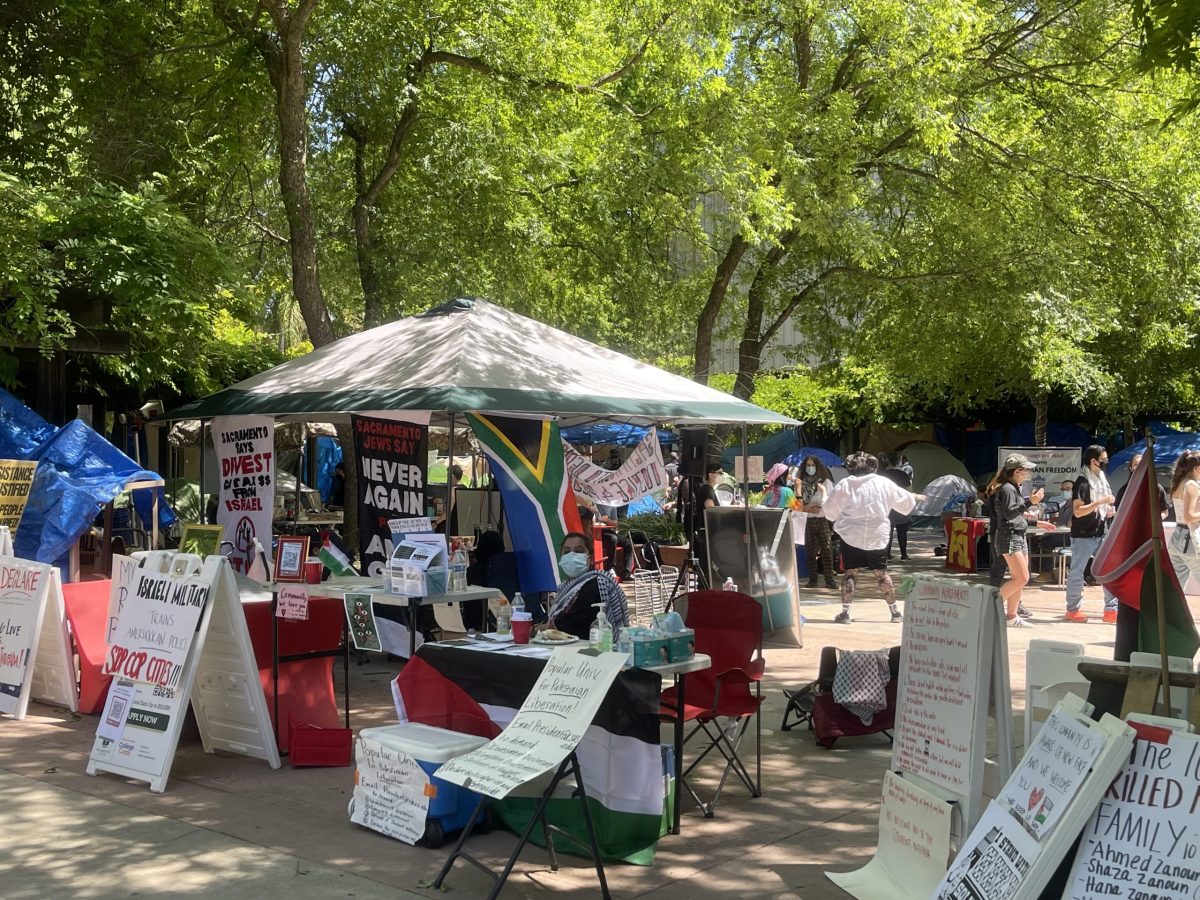Students have been protesting at college campuses across the United States in support of Palestine and calling on colleges to divest funds that support Israel. These protests started out as peaceful, but some have since turned violent.
Students are demanding American universities cut financial ties with companies assisting Israel with the war in Gaza, according to The Washington Post.
In response to the protests, colleges have moved classes online, adjusted or canceled graduation ceremonies, arrested and suspended students. In some cases, the police have been called onto campus to respond to protesters, according to The Washington Post.
Students should be able to peacefully protest on their college campus without fear of being arrested or suspended. The First Amendment protects their right to assemble peacefully and to express their viewpoint through protest. That is what the college protests started out as and that’s how they should have remained.
Students have sent up encampments on campuses, which on its own isn’t a bad thing. As long as they are out of the way and staying peaceful, the encampments don’t pose an issue, especially on the public college campuses where they aren’t on private property. The students are allowed to be on public property and they aren’t doing anything wrong, they’re simply exercising their right to free speech.
However, at Cal Poly Humboldt the students occupied Siemens Hall and Nelson Hall East, blocking the entrances with furniture, chains, zip ties and tents, according to the San Francisco Chronicle.
While I understand the point the students wanted to make, this is just a step too far. The protest stopped being peaceful and became a case of destroying property.
The protesters should not have gone that far, while they did make a point and get attention; At what cost? Occupying the buildings made the protest no longer peaceful, forcing the college to respond, and unfortunately the response impacted everyone’s learning by moving classes online until the end of the semester, according to the San Francisco Chronicle.
While some people might feel like the arrests and suspensions from school are uncalled for, after being given warnings and making the protest no longer peaceful, the colleges didn’t have much of a choice. This was one of the only ways to try and restore order.
At California State University, Sacramento encampments had been set up in the Library quad, according to the State Hornet.
Sac State has been doing a lot of things right. They’ve kept everything peaceful and in response, the college is letting the encampment stay up until tonight at midnight to protest as long as the protests remain safe and peaceful, according to the State Hornet.
This is the correct response to have. The students are allowed to exercise their freedom of speech peacefully without the college interfering. There is no need to control or stop the students when they are peaceful.
Sac State is altering their investment policies because of the encampments and is the first CSU to divest, according to the State Hornet.
Sac State divested because the student protests stayed peaceful the entire time in their encampment. They followed the rules from the college and the college listened to what the students wanted.
Peaceful protests have a long history of working and are taught to us time and time again for a reason.
The Montgomery Bus Boycott, Women’s Suffrage Parade, and student walkouts are all examples of protests that left an impact. Research backs up this idea to create change peacefully.
Nonviolent protests are more effective, according to The Harvard Gazette.
Peaceful protests need to be allowed to happen, so violent protests don’t become what’s seen as normal.


Rain Price • May 14, 2024 at 6:52 am
I believe that destruction of property hardly qualifies as violence in comparison to what is going on in Palestine, and the student protestors at Cal Poly Humboldt think the moral inperative to stop their support for g*nocide overrides the sanctity of the school’s property